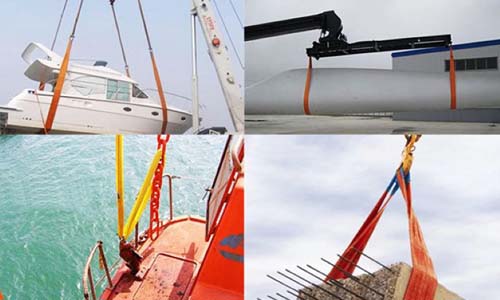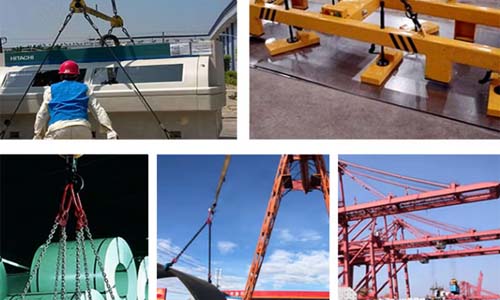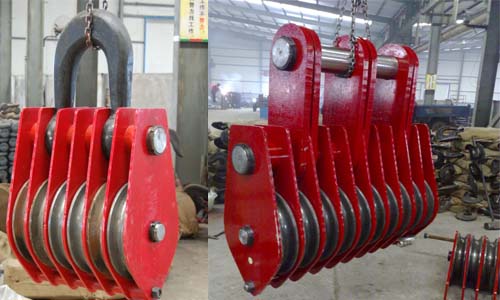When you want to lift heavy objects, you must know that you need a lifting tool, like a hoist or a crane. But that’s not enough. You require some rigging equipment, which can help you to connect the objects with the crane.
In this blog, we will list some usual rigging equipment for your reference.
Lifting Slings
Lifting Slings, also named lifting straps, mainly referring to synthetic fiber lifting straps, come in two main types: webbing slings and round lifting slings, with a maximum capacity of up to 300 tons. The tonnage can be determined based on the color of the lifting straps.
With a variety of types, high strength, lightweight, heat resistance, abrasion resistance, and corrosion resistance, lifting slings find wide applications in sectors such as shipping, machinery, construction, metallurgy, and transportation. For instance, webbing slings with loop ends, known for their stability, are widely used in ship lifting to ensure safety. Round flexible lifting slings, on the other hand, are extensively utilized in aviation for lifting aircraft and missiles due to their flexibility.

Chains
Chains come in diverse types including welded chains, non-welded chains, high-strength chains, stainless steel chains, and animal chains. In the lifting industry, the most common are Grade T lifting chains, with commonly seen strengths being G70, G80, and G100. Besides being essential accessories for chain hoists, they are often used in chain slings along with hooks, connecting links, and shackles. Chains offer flexibility, high load-bearing capacity, durability, easy maintenance, and find wide applications in lifting, towing, and securing in various scenarios.
Steel Wire rope
Steel wire rope is composed of multiple layers of high-strength carbon steel twisted into strands, which are then helically twisted around a core. Common types of steel wire rope include 6X19, 6X37, 6X36, and 7X19, varying by the number of strands and wires. Steel wire ropes offer high tensile strength, flexibility, strong load-bearing capacity, abrasion resistance, and corrosion resistance, widely used in elevators, ship towing, cable cars, bridges, mining, and other fields.

Shackles
Shackles, also known as connecting links, consist of a high-quality alloy steel shackle body and pin. Common types of shackles include bow shackles and D shackles. Shackles are essential links for connecting steel wire ropes and lifted objects.
Pulley and blocks
Pulleys come in various types such as single-wheel pulleys, double-wheel pulleys, multi-wheel pulleys, open pulleys, and closed pulleys. Their styles vary according to application areas, including electric, mining, and maritime. Pulleys have simple structures and are easy to use, primarily used for changing the direction of steel cables. They can be used individually or assembled into pulley systems, often paired with winches in construction.

Clamps
Lifting clamps, also known as steel plate clamps, are used to grip steel plates and connect them with steel wire ropes for crane lifting. There are various types of lifting clamps such as horizontal, vertical, single plate, and double plate clamps, widely used in steel plants, automobiles, metallurgy, and other fields to significantly improve production efficiency.
Hooks
Hooks, with simple structures, are indispensable devices in lifting operations. They come in a wide range of types including eye hooks, clevis hooks, and swivel hooks. Every hoist or crane is equipped with hooks. Hooks can be paired with chains, lifting straps, and steel wire ropes for bundling, lifting, and securing purposes.
While lifting equipment can be used individually, they are often combined. For example, in the case of lifting steel bars onto a ship, lifting straps, chain rigging, and hooks are simultaneously used.
Each sling has its own important role. Only by choosing the right sling can your hoisting be safe and effective. If you have any hoisting needs, please contact us.

